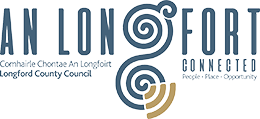Kenagh
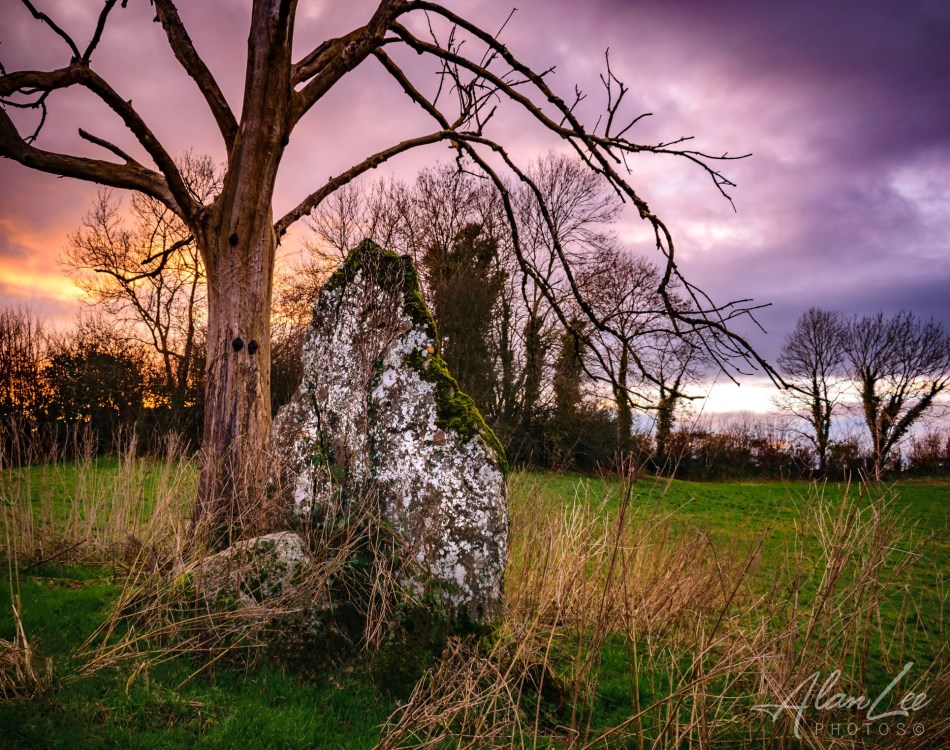
Cartronbrack Standing Stone, Kenagh - photo by Alan Lee
10 km south of Longford on the L15, the village of Kenagh is dominated by the elegant clock tower erected in memory of the Hon. Lawrence Harman King-Harman who died in 1875. Originally designed in 1878, the clock tower has recently been restored and is now looking better then ever before. Kenagh village is typically Irish in character, its single winding street lined by buildings of varying heights, and representing a number of vernacular architectural styles; stone buildings stand cheek-by-jowl with houses finished with a smooth plaster and brightly painted in the traditional Irish manner. The setting of the village makes it striking and unique. An abundance of trees provide a delightful sylvan backdrop on almost all sides-a legacy from the days when Kenagh was run as an estate village.
Kenagh village is typically Irish in character, its single winding street lined by buildings of varying heights, and representing a number of vernacular architectural styles; stone buildings stand cheek-by-jowl with houses finished with a smooth plaster and brightly painted in the traditional Irish manner. The setting of the village makes it striking and unique. An abundance of trees provide a delightful sylvan backdrop on almost all sides-a legacy from the days when Kenagh was run as an estate village.
History of Kenagh
A short distance to the North East is the 13th-century monastic remains of the Augustinian Friary at Abbeyderg. A holy well is situated nearby. There are also the remains of a Dominican monastery at Kilmacormack. In Kenagh village, on the former Mosstown Estate, is a unique dovecote - pigeon house, which has been recently restored. The local Landlords were the Kingston-Murrays who lived in Mosstown House, a fine mansion, which stood west of the village and was demolished in 1962. At the very heart of the village is a permanent reminder of another landlord, the influential Laurence Harman. King Harman of Newcastle house near Ballymahon died in 1875 and in 1878 an elegant and distinctive stone clock tower was erected in his memory. One of the few of its kind to have arrived in Ireland, it keeps perfect time.
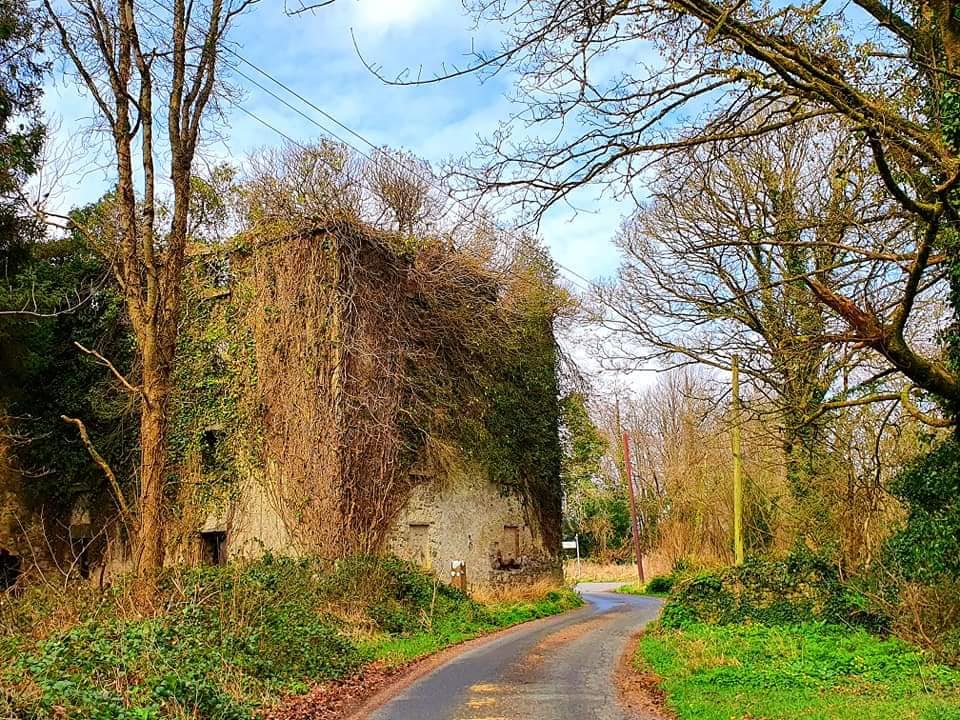
Mosstown house was originally an old Castle in Norman times, linked up with another castle at Ballyknock. There was an underground passage connecting the two castles. The underground passage was used as a means of protection in times of danger. People brought their children and animals to the passage during times of attack to seek sanctuary. In fact, Mosstown was attacked three times. In 1641, Mosstown was under attack by Cromwell, who having successfully invaded the estate presented it to one of his Generals, Sir Thomas Newcomen. The second attack took place in January 1690, at this stage the house was still in the hands of Thomas Newcomb. However, on this occasion dame or lady Newcomen commanded the defense. Lady Newcomen, aided by about 200 of her tenants, fortified the house against the Irish rebels until they brought field-pieces against it. Left with no other choice Sarah Newcomen was forced to surrender the house, arms and ammunition. Mosstown suffered its last siege in 1798. At this time Alexander Crowford Kingston occupied the house. Determined, as Kingston was to defend his home against the rebels, he surrendered shortly after the attack was instigated. Fortunately, despite the fact that this was the third siege on the house, little damage was done to the actual house itself. The only major attraction Mosstown house holds at the moment, is the pigeon house (pictured above). It is one of only six remaining in Ireland to the present day. This two-storied building is octagonal in shape, slated, and approximately 10ft from the ground. Although difficult to estimate, it is believed that its erection dates back as far as the 18th century. Nonetheless, the construction of this building was not for the pleasure of seeing birds in flight. It was strictly practical and part of the business of staying alive. It housed and flattened pigeons, bird meat and eggs, which were a necessary commodity on the estate.
Another important historical building located in Kenagh is The Seven Dwarf Cottage. This house is situated in fairytale surroundings on the banks of the Kenagh River facing the old mill. It was also known as Millers Cottage, possibly because it was built for the mill manager. The cottage has always been somewhat famous primarily due to the fact the comedian Dave Allen lived there for three years from 1942-1945. During The Second World War and after the north strand bombings the O’Mahoney family were evacuated from Dublin where their father remained on as Editor for The Irish Times. The local Defense force made the seven Dwarf cottage available to the O’Mahoney family. When peace was restored, the family moved back to London. This cottage is currently occupied.
The ponds in Mosstown were renowned in Kenagh and the surrounding area for their beauty and tranquility. They were man made ponds with walks around them, where the inhabitants of Mosstown house could enjoy summer evenings. The pounds were designed and build during famine times as a relief scheme to help to create employment. Kenagh has several historical attractions, which lie outside the town, including the church of St. Dominic and the Mosstown Mill, which was a source of employment for the town until 1912, when it accidently burned down. The Lime Tree Avenue was one time promenade for the ladies of Mosstown and their guests. The remains of Abbeyderg Augustinian Priory lie two km to the Northeast on the Ardagh road. For three centuries a monastery of the Canons Regular of St. Augustine existed here under the titular name of St. Peters.
Things to Do & See in Kenagh
Corlea Trackway Visitor Centre
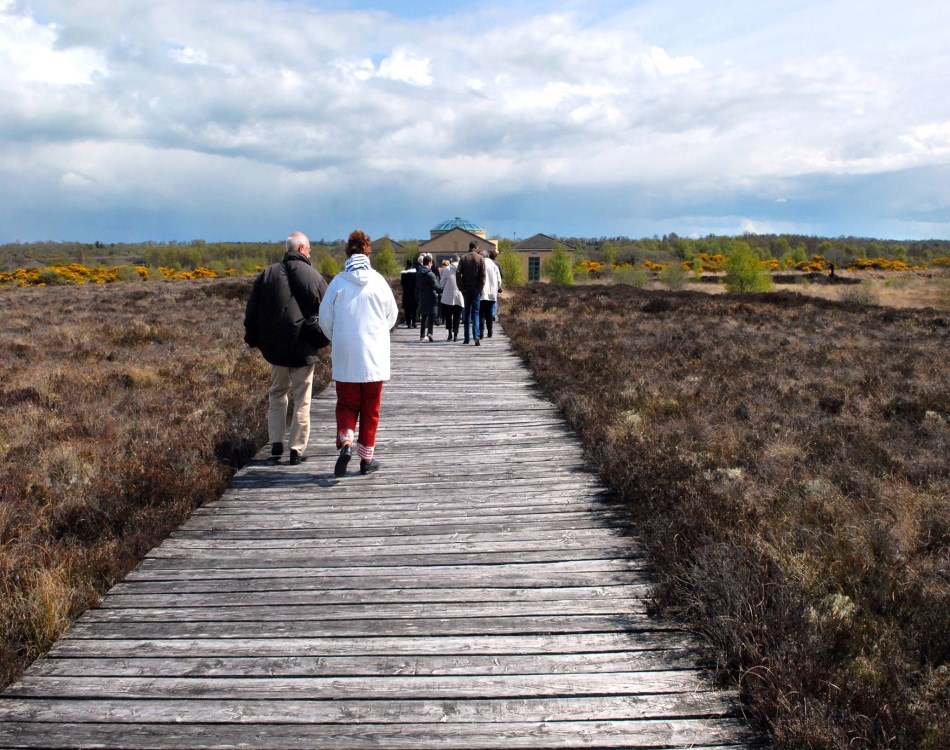
Corlea Trackway Visitors Centre - photo by Tommy Reynolds
This centre tells the story of the local Iron Age bog road, built in the year 148BC across the boglands close to the River Shannon. Its the largest road of its kind to be uncovered in Europe and was excavated by Professor Barry Raftery of University College Dublin in 1985. Inside the building, an 18 metre stretch of perserved road is on permanent display in a specially designed hall with humidifiers. Guided tours of the site are available and the centre is fully accessible for disabled visitors. There are also beautiful amenity walks in the surrounding bogland and to the Royal Canal. For further information see: Corlea Trackway Visitors Centre.
St George’s Church
This church is a beautiful cut stone building erected in 1832. Its four-spire tower is a unique feature. It is open every Sunday for religious service. The church also has an adjoining graveyard. An ornate and finely executed Gothic style Church of Ireland Church exhibiting fine craftsmanship in carved limestone detailing distributed generously throughout the building. Built in 1832 by Jane Dowager, Countess of Ross (Newcastle Demesne) to the designs of architect William Farrell.
The Pigeon House
Another unique feature of the locality, the Pigeon House is one of only six remaining intact in Ireland. It was built in 1808 as part of the old Mosstown Estate and was used to supply eggs and pigeon meat to the ‘Big House’. It is privately owned but its location leaves it visible to the main road. It was re-roofed about 1990.
This Pigeon House is one of the few surviving demesne structures on the former Mosstown estate. Together they form an interesting group in the landscape and are an important part of the architectural heritage of the area.
The White Gates
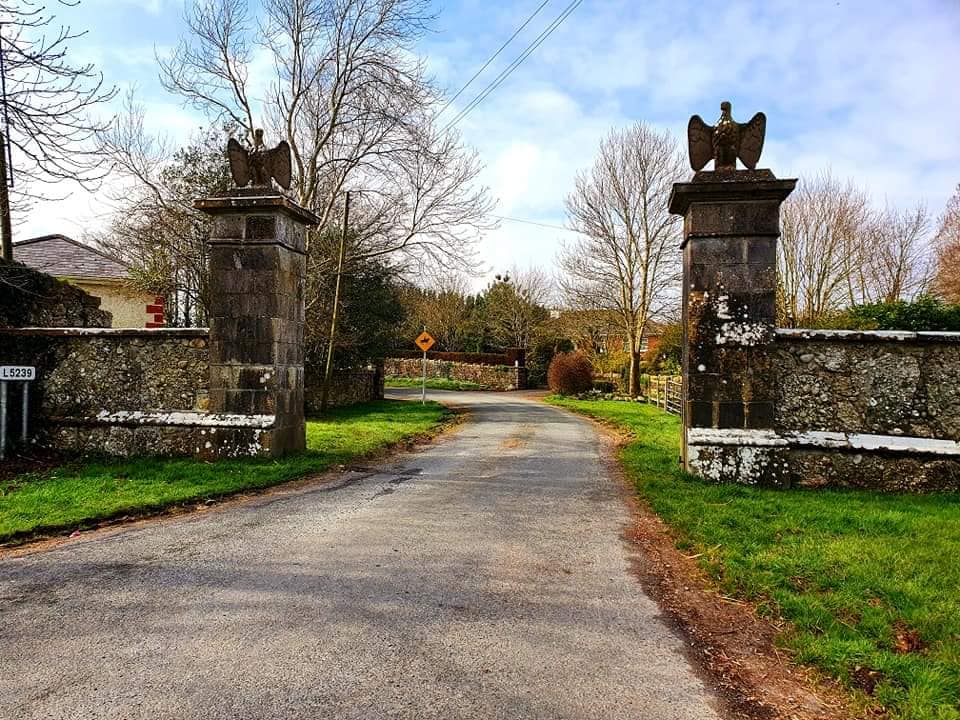
The White Gates are the old entrance gates into Mosstown Estate. An eagle is perched on each pillar. It opens on to the main Athlone-Longford road. The remains of the old Weslian Church alongside are an added attraction.

